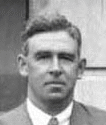
|
What is the Dobson Unit (DU)? |
|||||||||||||||||||
Tropospheric
|
||||||||||||||||||||
|
|
|
NO2
- global CH2O - global |
|
|
|
UV
- UV index - UV dose |
|
|
|
Ozone
- total column - global field - ozone hole - ozone profiles |
|
|
|
Aerosol
- ADRE - aerosol index Clouds - cloud info Surface - solar irradiance |
|
|
|
Volcanic plume
- SO2 & AAI |
|
|
|
Albedo
- climatologies Fluorescence - sun-induced |
18 August 2011
 The "Dobson unit" is named after professor G.M.B. Dobson (1889 - 1976),
who has from the 1920s onwards done research on the ozone layer.
Around 1930 he built the first "Dobson spectrophotometer",
with which reliable measurements of the ozone layer became possible.
The "Dobson unit" is named after professor G.M.B. Dobson (1889 - 1976),
who has from the 1920s onwards done research on the ozone layer.
Around 1930 he built the first "Dobson spectrophotometer",
with which reliable measurements of the ozone layer became possible.
The "Dobson unit" indicates how much ozone there is in the air above a certain point on Earth. A proper unit would thus be "Kilogram per square meter".
The unit introduced by Dobson arises as follows. Suppose that all the ozone in the air would be in a (gas) layer just above the ground, at standard pressure (1013.25 hPa) and at standard temperature (0.0 Celsius). The amount of ozone is then indicated by the thickness of this layer, expressed in 0.01 millimeter. (This is why the ozone layer is sometimes referred to as being "thick" or "thin".)
- 1 Dobson unit (DU) is:
- 2.6867E+20 molecules per square meter
- 4.4615E-04 MOL per square meter
- 2.1415E-05 kilogram ozon per square meter
During spring on the southern hemisphere, September-November, the so-called "ozone hole" develops, with ozone values (well) below 200 DU. See, for example, these graphs of the depth and size of the Antarctische ozone hole
The Dobson Unit is sometimes also used for other trace gases in the atmosphere.
Some related links